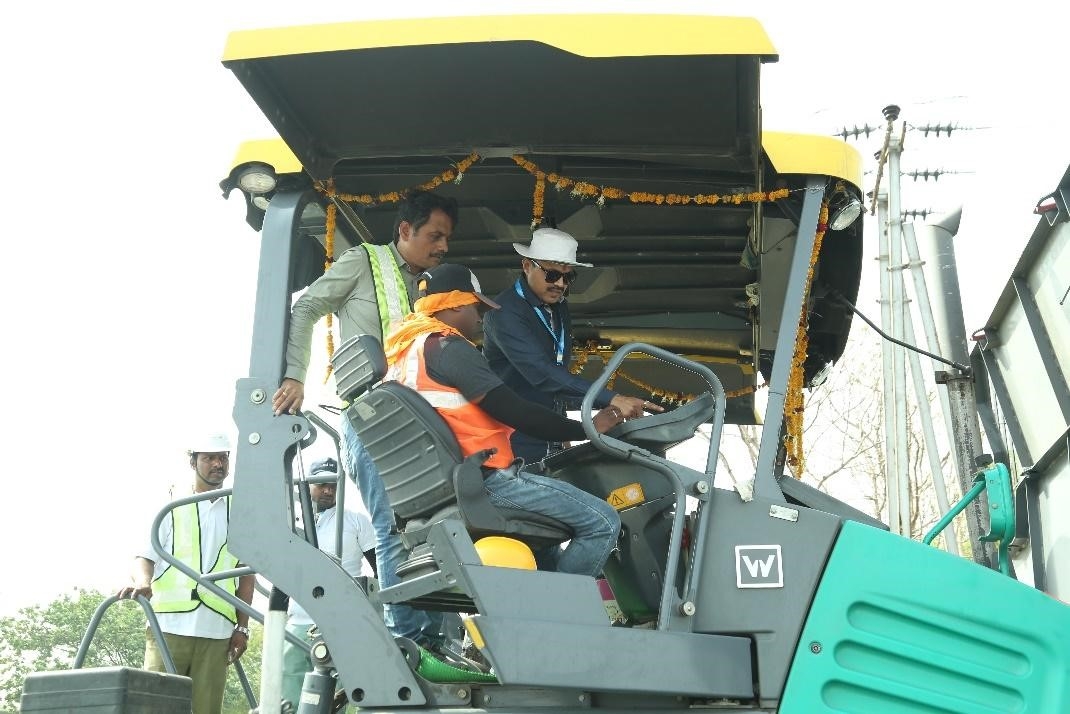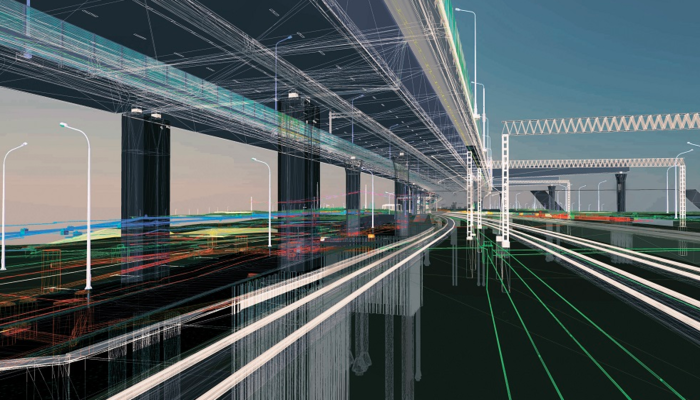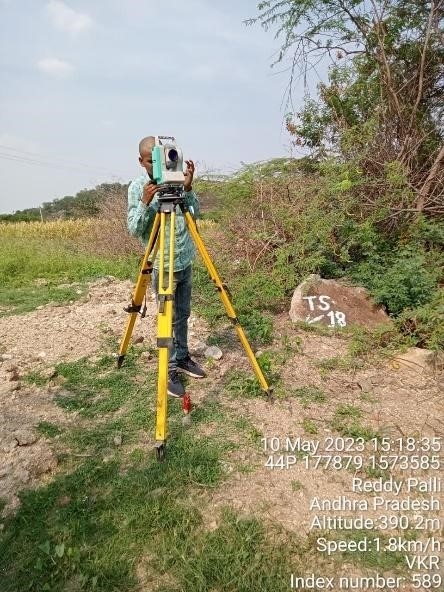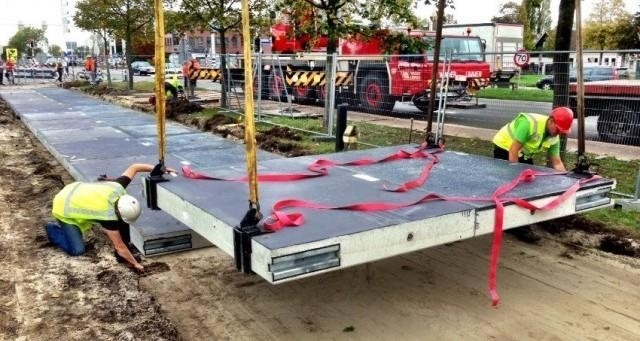Transformative Technologies and Future Opportunities in Indian Infrastructure
01 Aug 2024 12:58:23
In an era marked by rapid technological advancement in Indian infrastructure, the road construction industry stands at the forefront of transformation. The increasing demand for enhanced infrastructure drives the need for innovative solutions that address enhancing riding quality and tackle efficiency of construction, sustainability, and the persistent challenge of skilled labor shortages, which is more pronounced when greenfield highways are constructed in remote locations.


BIM has become extremely popular with the construction industry particularly when structures are involved. Confined space working is substantially simplified and the working risk is drastically reduced. Owing to the reliability of this application, and its multi-dimensional approach on various aspects that are inherent to any project, the NHAI is now considering submission of all tenders in the BIM format. This will help precise evaluation of the construction company’s proposal for a road project and bring in transparency about all the factors considered from the quality of materials, plant, and machinery to quality checks and sustainability measures taken.
Drones have transcended their initial role in aerial photography to become indispensable tools for site surveying, generating topographical maps, and monitoring construction progress in real time. Equipped with LiDAR technology, drones produce intricate 3D terrain models, enhancing planning accuracy by identifying environmental and logistical challenges early in the project lifecycle. NHAI mandates the reporting of monthly project progress all its projects on its portals in the format of drone videography, as it gives them the advantage of real-time progress and also gives them a picture of anticipated obstacles in the way of offering available fronts for site work, especially in greenfield projects.
Road construction companies are notching up their survey mechanisms using DGPS (Differential Global Positioning System) which is an enhancement to the Global Positioning System (GPS) providing surveyors with improved location accuracy. DGPS uses a network of fixed ground-based reference stations to broadcast the difference between the positions indicated by the GPS satellite system and known fixed positions. The digital correction signal is typically broadcast locally over ground-based transmitters of shorter range.

Last but not least, although much is being talked about the expansive application of AI in most fields and in innovative ways to make processes and systems efficient, it will still be some time until it acquires a firm root with any significant contribution to optimizing routine processes, in the road construction sector of Indian infrastructure.
While traditional roles may diminish, the digital age opens avenues in data analytics, drone operation, and managing advanced construction equipment. The infrastructure sector must recalibrate training programs to equip the workforce with requisite skills, ensuring alignment with evolving technological demands. The need is the mother of invention and each day more and more researchers are thinking out of the box and coming up with solutions to address challenges, all with an intent to speed up the construction completion without compromising on safety or quality. Trials are in progress before launching these techno-solutions into the hungry market of infra-construction.
Despite its benefits, implementing advanced technologies presents formidable challenges:
Cost Considerations: Substantial upfront investments are required for trials, acquiring and deploying advanced equipment and software. Government incentives, tax breaks promoting sustainable technology adoption, and collaborative industry efforts are pivotal in bridging financial gaps.
Skill Shortage: Attracting and retaining skilled talent capable of operating and maintaining new technologies remains critical. Investment in training initiatives, partnerships with educational institutions, and fostering a culture of continuous learning are imperative to cultivate a future-ready workforce.
Awareness and Adoption: Many companies remain unaware of the transformative potential of these innovations. Industry leaders must advocate for technology benefits and share best practices through conferences, workshops, and knowledge-sharing initiatives to stimulate widespread adoption.
Lack of regulatory protocol: Since the entire innovative field is in a constant evolutionary phase, there is a severe lack of established, time-tested data and analytics that will provide a foundation for scribing regulations and standards by the governing bodies and the government. Various experimental trials are underway and encouraging results are presented in various forums and white papers. Permissions are accorded on a case-to-case basis for implementation; however, the absence of firm guidelines still adapts an innovative solution, a grey area.
Paving the Future of Road Construction
The future of road construction hinges on innovation. By embracing new products, materials, and technologies, we can construct more sustainable, efficient, and durable roads. Overcoming challenges of cost, talent acquisition, and awareness requires collaborative efforts among industry leaders, governmental bodies, and research and development institutions, like the IITs. Steps towards the future with solutions like self-healing concrete, recycled plastic roads, using milled material, prefabricated plastic roads, and solar roads bring along with them huge advantages of lower carbon emissions, faster repairs and reduced damages and maintenance, durability, storage, and protection for underground cabling, water drainage, cabling, a smaller carbon footprint and a host of other economic benefits. As we invest in the construction future, we lay the groundwork for a resilient and sustainable transportation network for generations to come. We just need to open our minds and design engineering to the possibilities that lurk around the corner.

This article by Mr. Jagdish Kadam was recently published in the edition of New Building Materials & Construction World (NBM&CW) magazine.
The innovations in the sector can be divided into three phases of the project lifecycle, namely
- Road construction materials and machines,
- Design and implementation, and
- Highway operations and management.

In the road construction materials and machines sector, the use of innovative materials, automation, and machine control technologies has been encouraged to improve efficiency and lower the environmental impact. In the design and implementation phases, technological advancements have increased the construction speed and lowered the project lifecycle cost. Technology-based initiatives are increasingly being adopted in the highway operations and management phase to improve operation management and safety on the highways.
Transformative Technologies
Central to this evolution is Building Information Modelling (BIM), enabling the creation of digital twins that replicate entire projects in a virtual environment. This multi-dimensional modeling facilitates seamless collaboration among stakeholders, pre-emptively identifies issues during design phases, optimizes resource allocation, and prevents costly delays. Augmented by advanced analytics and real-time sensor data, predictive maintenance ensures proactive interventions in up to 9 different dimensions, before issues arise.

BIM has become extremely popular with the construction industry particularly when structures are involved. Confined space working is substantially simplified and the working risk is drastically reduced. Owing to the reliability of this application, and its multi-dimensional approach on various aspects that are inherent to any project, the NHAI is now considering submission of all tenders in the BIM format. This will help precise evaluation of the construction company’s proposal for a road project and bring in transparency about all the factors considered from the quality of materials, plant, and machinery to quality checks and sustainability measures taken.
Drones have transcended their initial role in aerial photography to become indispensable tools for site surveying, generating topographical maps, and monitoring construction progress in real time. Equipped with LiDAR technology, drones produce intricate 3D terrain models, enhancing planning accuracy by identifying environmental and logistical challenges early in the project lifecycle. NHAI mandates the reporting of monthly project progress all its projects on its portals in the format of drone videography, as it gives them the advantage of real-time progress and also gives them a picture of anticipated obstacles in the way of offering available fronts for site work, especially in greenfield projects.
Road construction companies are notching up their survey mechanisms using DGPS (Differential Global Positioning System) which is an enhancement to the Global Positioning System (GPS) providing surveyors with improved location accuracy. DGPS uses a network of fixed ground-based reference stations to broadcast the difference between the positions indicated by the GPS satellite system and known fixed positions. The digital correction signal is typically broadcast locally over ground-based transmitters of shorter range.

Last but not least, although much is being talked about the expansive application of AI in most fields and in innovative ways to make processes and systems efficient, it will still be some time until it acquires a firm root with any significant contribution to optimizing routine processes, in the road construction sector of Indian infrastructure.
Creating Opportunities in a Digital Landscape
Addressing Challenges on the Path to Innovation
Despite its benefits, implementing advanced technologies presents formidable challenges:Cost Considerations: Substantial upfront investments are required for trials, acquiring and deploying advanced equipment and software. Government incentives, tax breaks promoting sustainable technology adoption, and collaborative industry efforts are pivotal in bridging financial gaps.
Skill Shortage: Attracting and retaining skilled talent capable of operating and maintaining new technologies remains critical. Investment in training initiatives, partnerships with educational institutions, and fostering a culture of continuous learning are imperative to cultivate a future-ready workforce.
Awareness and Adoption: Many companies remain unaware of the transformative potential of these innovations. Industry leaders must advocate for technology benefits and share best practices through conferences, workshops, and knowledge-sharing initiatives to stimulate widespread adoption.
Lack of regulatory protocol: Since the entire innovative field is in a constant evolutionary phase, there is a severe lack of established, time-tested data and analytics that will provide a foundation for scribing regulations and standards by the governing bodies and the government. Various experimental trials are underway and encouraging results are presented in various forums and white papers. Permissions are accorded on a case-to-case basis for implementation; however, the absence of firm guidelines still adapts an innovative solution, a grey area.
Paving the Future of Road Construction

About the Author
Mr. Jagdish Kadam is the techno-savvy CMD of Rajpath Infracon Pvt. Ltd., a 35 years young infrastructure organization that proudly boasts of an India Book of Records in 2021 followed by a Guinness World record in 2022. He has been a speaker on the globally acclaimed TEDx platform and a recipient of multiple prestigious honors and special Excellence Awards by the Ministry of Road Transport and Highways (MoRTH) and NHAI on various occasions, recognized and honored by the ET, CNBC, Asia one as the Best Brand and Best Leader in Dubai, and has been felicitated by the COEP Alumni with the Abhiman Award.
Besides this, he also shoulders the responsibility as the Chief Trustee of the Raja Shivchhatrapati Pratishthan, Pune of the famed Shivshrusti Project, Trustee of Deccan Education Society, President of the Rajshree Kadam Prathisthan and the Executive Board member of the FLAME University, Pune.
With a civil engineering degree and a wealth of experience up his sleeve, Mr. Kadam is passionate about driving innovative ideas and implementing them. For this insightful vision and sharp evaluation in this regard, he has been nominated to the Board of the CII for propelling the agenda of Sustainability in the road construction sector.
This article by Mr. Jagdish Kadam was recently published in the edition of New Building Materials & Construction World (NBM&CW) magazine.